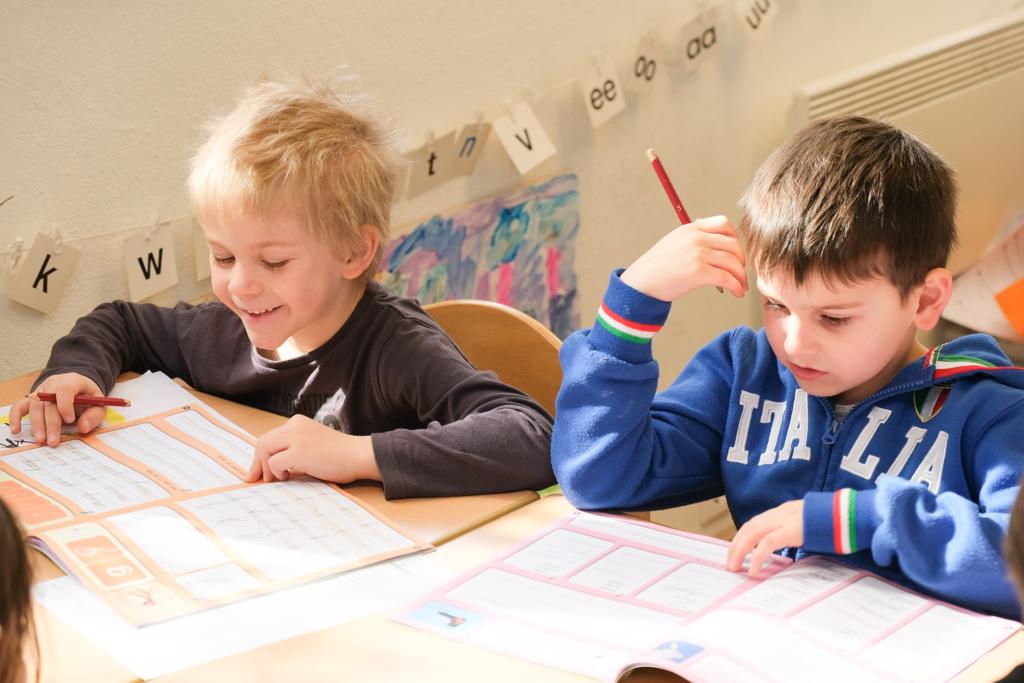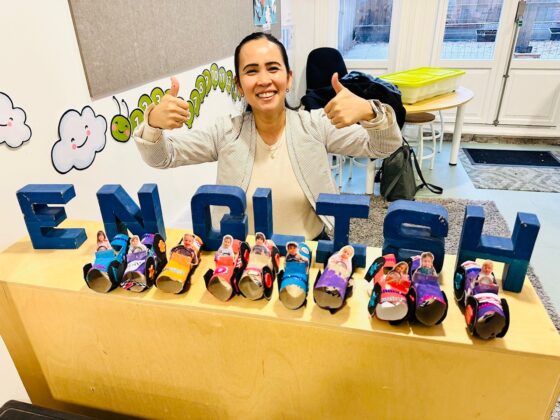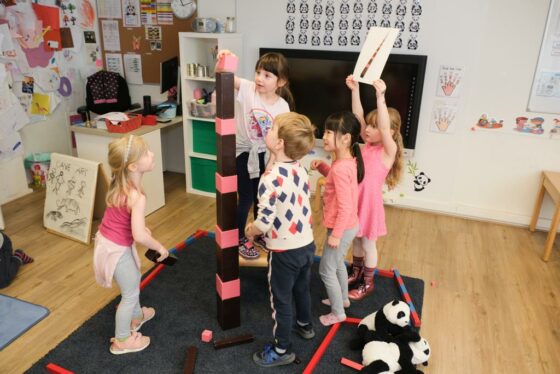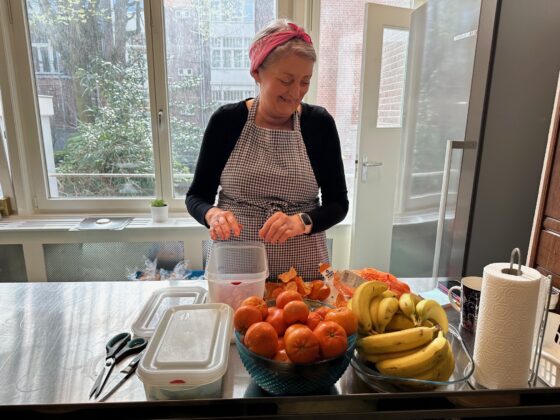Partner content
Bilingual education is about more than two languages

For international parents, choosing where to educate their children is one of the most critical decisions they face. Those on short-term stays may want an English-language or international school, while those who are here for the long haul may decide to go native in the Dutch education system.
At Winford Bilingual primary schools—in Amsterdam, Haarlem and The Hague—such choices are academic because they are the only truly dual language primary schools in the country. Winford has developed its own integrated English-Dutch curriculum and students learn everything from critical thinking to decision-making in two languages from day one to graduation.
“All of our classrooms are multi-level and dual language,” says Joy Otto, programme director of Winford Bilingual Amsterdam and coordinator for all Winford Bilingual schools. “What is very unique about us is that we have two classrooms in one. Every classroom has two native speaking teachers, a Dutch teacher and an English teacher.
“We really look more at the whole child here. We don’t group children just by their age,” says Joy. “As a small school, we have the luxury of taking 30 days to get to know each child, and then we place them where we believe they will thrive. Because I really believe that every child has a gift, and it’s our job to figure out what that gift is and to help them level up on their challenges.”
The Hague
Come this May, Winford Bilingual will open a new school in The Hague with a brand-new programme featuring its celebrated bilingual curriculum but also with an option for students to move to a strictly Dutch curriculum from age nine. The dual pathway empowers students to make informed decisions about their educational journey, preparing them for the next steps—which is what Winford Bilingual is all about.
You can visit Winford Bilingual The Hague on June 1, when the school will hold an open house. Personal tours at all three locations are possible.
Blue and Red
At Winford Bilingual Amsterdam on a quiet, leafy street near the Museumplein, some 70 students fill the sunny and welcoming classrooms in a grand townhouse. At first glance, the classrooms look much like those you’d find in any other private school. But on closer inspection, you can see the Winford difference: each class is divided into a blue and a red section—the blue section for English, the red Dutch-only.

“We assign language by person, location, and colour,” says Joy. “So, when a child is speaking with an English teacher, they must speak English. When they are sitting in the blue section, they also know they must speak English. And when they go to the other side of the room and it’s red, they know they need to speak Dutch. It’s very clear to them.”
“It’s surprising how easily they pick up any language that that they haven’t mastered yet,” says Willem van Hoof, teacher of the 4-, 5- and 6-year-olds in the school’s Panda group and assistant director of Winford Amsterdam.
Julia Bormann, the English teacher for the Eagle class of older children aged 9 to 12, agrees. “It’s amazing to see how the kids can switch from one language to the other, and they know exactly when it’s transition time and when they have to switch their brains from English to Dutch or the other way around,” she says.
“It’s also really nice to see how the different age levels work together. The older ones help the smaller ones, or the other way around, and everyone’s accepted, everyone’s welcome.”
“For example, now we’re talking about dinosaurs,” says Willem. “And even though we don’t teach the same exact lesson in both Dutch and English, we do touch on the same subjects, such as fossils and the eras when the dinosaurs lived. It may be on different days, but it’s within the same week, and we cover the same vocabulary. The key is communication.”
Smart investment
Another aspect that sets Winford apart from other private schools is its unique curriculum, based on a combination of the Dutch, British and International Primary Curriculum (IPC). Students therefore have a choice of secondary schools. They’re ready to excel in Dutch schools (where they’re automatically enrolled in the lottery system), or they can go to international schools, British or American ones.

“I feel very strongly that parents pay a huge investment when they give us their children, and I want to make sure they get a good return on that investment,” says Joy. “Investing in your children now will get returns, because parents are setting them up for two areas of success from the start. Our promise is that if you come to us (at a young age), when you leave, you’ll be fluent in both languages.”
Joy also emphasises that Winford is not an international school. “We’re a Dutch private school,” she says. “Most families choose us because they want their child to be integrated into the Dutch system. But life happens, so they’re not 100% sure if they’ll stay here all the way through middle or high school. They want to have that choice.”
At Winford Amsterdam, some 40-45% of the families are Dutch, meaning they have one Dutch-speaking parent and speak Dutch at home. Another 40%, who Joy refers to as “transplants,” are from within the EU, while the rest hail from Britain and US.
Jenni Iyoyo is responsible for marketing and admissions at all three of Winford’s bilingual schools. She says the parents reaching out to her are looking for smaller classes that provide more attention to their child.
“They believe their child could do so much more if they just had the right attention,” she says. “They want to give them that chance. They also love that we teach to the child’s ability, because we have mixed abilities in every classroom.”
That’s a huge selling point for many Dutch families, who sometimes feel their kids get left behind in traditional Dutch schools if they’re either too advanced or have learning challenges.
Flexible vacations and hot lunches
Anyone who’s ever had a child enrolled in a Dutch public school knows how strict they are regarding vacations and the fines that can be levied if you’re caught breaking the rules. But at Winford Bilingual, holiday time is flexible, meaning parents can take their kids out of school when it conveniently fits their own family schedule, something that even international schools in the Netherlands can’t offer.

“Because we came in on a pilot programme, we are able to provide flexible holidays,” explains Joy. “Parents really love that, because they can spend extra time with their family and avoid all the expensive Dutch vacations.”
Another unique selling point of these boutique schools is their hot lunches, made and prepared on-site and served in dining-room style.
In Amsterdam, cook Anna serves up such vegetarian favourites as mozzarella and pasta bakes, vegetable biryani and Thai sweet potato and coconut soup. “It smells so good that sometimes we get distracted from working!” says Joy, whose office with Jenni is next to the dining room.
For more information about all Winford Bilingual primary schools, click here.
Thank you for donating to DutchNews.nl.
We could not provide the Dutch News service, and keep it free of charge, without the generous support of our readers. Your donations allow us to report on issues you tell us matter, and provide you with a summary of the most important Dutch news each day.
Make a donation